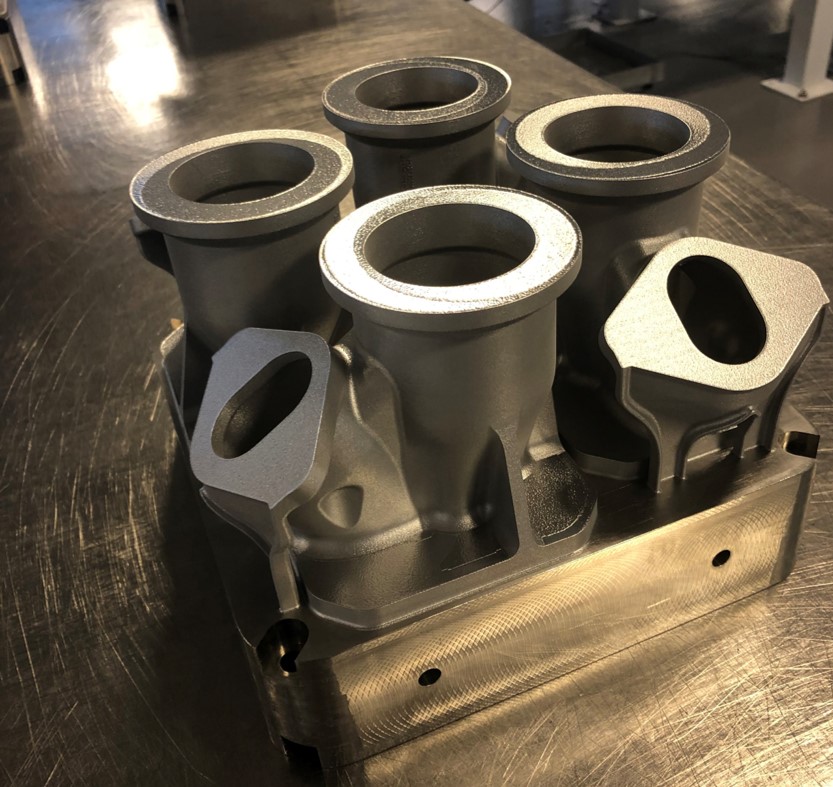
GE Additive says that it has successfully 3D printed four bleed air parts from a land/marine turbine.
Previously, the parts, made for GE Aviation’s GE90 turbojet, were fabricated with a casting mold. According to the company, using additive manufacturing (AM) could cut up to 35% of the cost using conventional casting technology. The conversion process took 10 months to go from identifying target parts to 3D printing final prototypes, while producing aerospace and land/marine turbine parts using a casting process can take 12 to 18 months or more, the company said.
GE was able to print the 5 inches in diameter and 6 inches tall parts in batches of four on a Concept Laser M2 machine. They are made of either CoCr, an alloy of cobalt and chrome often used for hot-turbine parts, or Ti-64, a stiff, lightweight titanium-aluminum-vanadium alloy used for structural parts.
‘This is the first time we've done a part-for-part replacement, and it was cheaper doing it with additive than casting,’ said GE Aviation AM manager Eric Gatlin. ‘We said right up front we were going to pick a material we had already qualified. In production, we opted for the M2 because we know it well. And we were not going to do any wholesale design changes, just some tweaks so we could print the parts successfully. We simplified as many steps as we could so the team could run fast.’
This story uses material from GE Additive, with editorial changes made by Materials Today. The views expressed in this article do not necessarily represent those of Elsevier.






